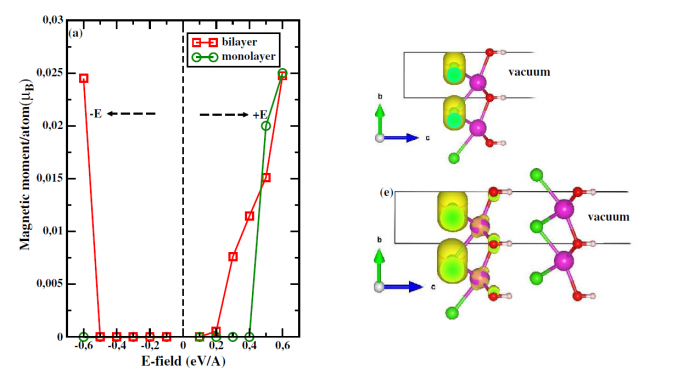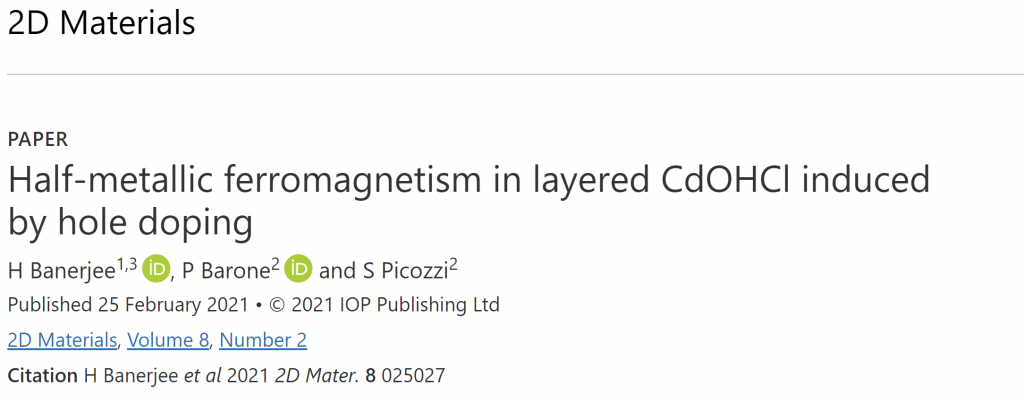

Abstract
Next-generation spintronic devices will benefit from low-dimensionality, ferromagnetism, and half–metallicity, possibly controlled by electric fields. We find these technologically–appealing features to be combined with an exotic microscopic origin of magnetism in doped CdOHCl, a van der Waals material from which 2D layers may be exfoliated. By means of first principles simulations, we predict homogeneous hole–doping to give rise to p-band magnetism in both the bulk and monolayer phases and interpret our findings in terms of Stoner instability: as the Fermi level is tuned via hole–doping through singularities in the 2D-like density of states, ferromagnetism develops with large saturation magnetization of 1 µB per hole, leading to a half-metallic behaviour for layer carrier densities of the order of 1014 cm−2. Furthermore, we put forward electrostatic doping as an additional handle to induce magnetism in monolayers and bilayers of CdOHCl. Upon application of critical electric fields perpendicular to atomically–thin-films (as low as 0.2 and 0.5 V Å−1 in the bilayer and monolayer case, respectively), we envisage the emergence of a magnetic half-metallic state. The different behaviour of monolayer vs bilayer systems, as well as an observed asymmetric response to positive and negative electric fields in bilayers, are interpreted in terms of intrinsic polarity of CdOHCl atomic stacks, a distinctive feature of the material. In perspective, given the experimentally accessible magnitude of critical fields in bilayer of CdOHCl, one can envisage p band magnetism to be exploited in miniaturized spintronic devices.
Info
H Banerjee, P Barone and S Picozzi. Half-metallic ferromagnetism in layered CdOHCl induced by hole doping, 2D Materials 8, 025027 (2021). DOI: https://doi.org/10.1088/2053-1583/abe4ba
—

Leave a Reply